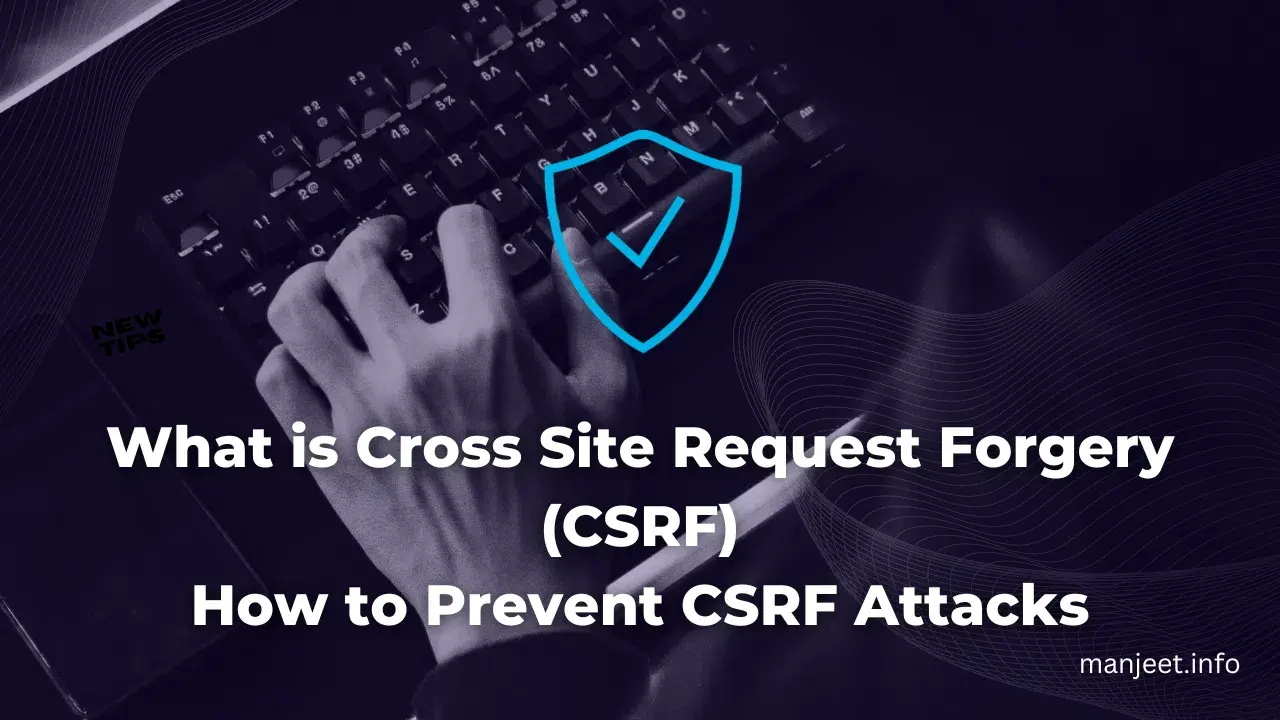Cross-Site Request Forgery (CSRF) is a type of security vulnerability that can compromise web applications' confidentiality, integrity, and availability. It involves an attacker tricking a victim into acting on a website without the victim's knowledge or consent. CSRF attacks can lead to data theft, unauthorized fund transfers, or other malicious actions the attacker desires.
Cross-Site Request Forgery (CSRF) Attack Example :
Let's consider a simple example to understand how CSRF attacks work. Suppose a user is logged into their online banking account and has a session cookie stored in their browser. The session cookie is used to authenticate the user and grant access to their account. If the user visits another website with malicious code injected, the code can request the bank's website using the user's session cookie. Since the request is made from the user's browser, the bank's server sees it as a legitimate request and processes it, giving the attacker access to the user's account.
CSRF attacks are often carried out by embedding malicious code in links or forms on legitimate websites the victim is likely to visit. For example, a malicious link in an email or a social media post can trigger a CSRF attack when clicked. The victim may not even realize that the attack has occurred since the request is made silently in the background.
How can cross-site request forgery CSRF be prevented
To protect against CSRF attacks, web developers can use a combination of strategies:
- Implementing CSRF Tokens: A CSRF token is a unique value generated for each user session and included in every form submitted to the web application. When the form is submitted, the server verifies that the token in the request matches the expected value for the user session. If it does not match, the request is rejected. This is a highly effective defense against CSRF attacks since an attacker cannot know the token value for a particular user session.
- Using the SameSite Attribute: The SameSite attribute can be added to cookies sent by the web application. This attribute tells the browser that the cookie should only be sent with requests originating from the same site as the original request. This helps prevent CSRF attacks by ensuring that the session cookie is not accessible to attackers who might be operating from a different domain.
- Verifying the Referer Header: The Referer header can be used to ensure that requests originate from the same site as the web application. However, this is not a foolproof defense since the Referer header can be spoofed.
- Limiting the Scope of Requests: Web applications should be designed to limit the scope of requests that users can submit. This includes determining the actions that can be performed, restricting access to sensitive resources, and enforcing strict access control policies.
In conclusion, CSRF attacks are a serious threat to the security of web applications and can be challenging to detect and prevent. Implementing defenses such as CSRF tokens, SameSite cookies, and strict access control policies can help protect against these attacks. It is also essential for web developers to stay up-to-date with the latest security vulnerabilities and to implement best practices for web application security.
Read more about Protect Your Website from Hackers: A Comprehensive Guide to Website Security
